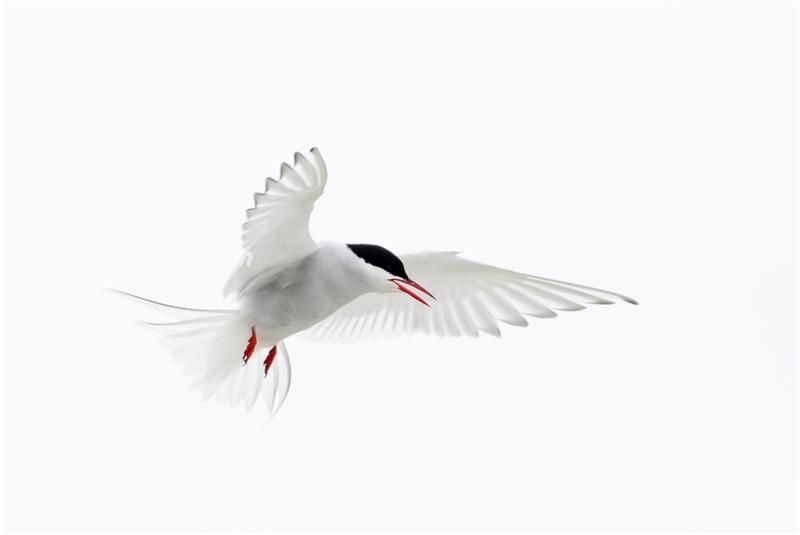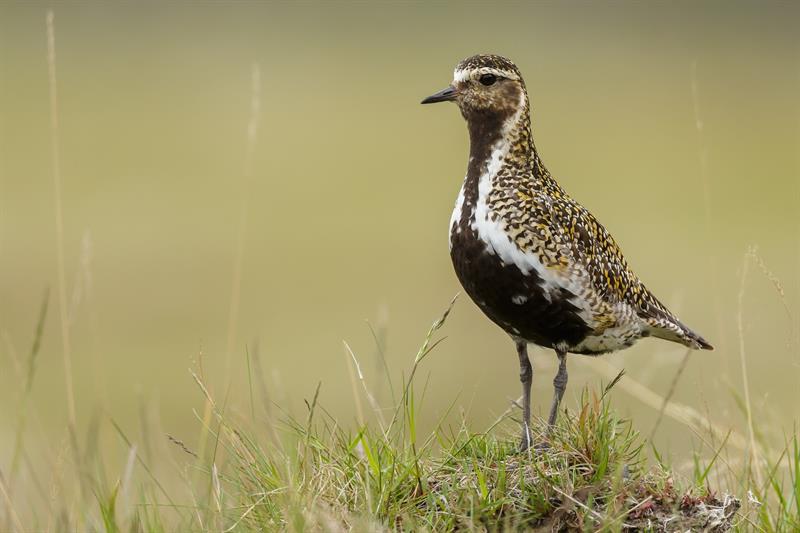Whether you are an amateur bird enthusiast or an experimented ornithologist, Iceland will charm you with the richness of its birdlife and the excellent observation conditions it offers in many places. On your birding trip across Iceland, you will be able to tick many species off your list, especially in May/June when populations come in significant amounts and are unmissable. You need only bear in mind not to walk off the marked trails on breeding grounds as nests can be anywhere.
Best time for bird watching
The best time for a visit is undoubtedly from late May through June, when migrant species have arrived on land and start nesting, fighting tooth and nail for their territories. They usually leave Iceland again through August and September, which leaves a great window for birdwatchers. This time coincides with the Summer solstice, when the sun remains above the horizon for 24 hours, creating the best settings to indulge your hobby. Get out your binoculars and catch the call of Iceland’s finest feathered friends, you will sleep later!
In Winter, the weak amount of daylight and sometimes harsh weather conditions represent major constraints but keep on the lookout for Merlin, Snow Bunting, While-tailed Eagle, Snowy Owl, and the Rock Ptarmigan in its winter outfit.
Best place for bird watching
Iceland boasts a dramatic coastline of imposing cliffs of rugged beauty that are home to large colonies of seabirds all year round, the most frequently observed being seabirds including the emblematic Atlantic Puffin, Fulmar, Guillemot, Razorbill, Northern Gannet, Arctic Tern, but also a wide variety of small waders and passerine birds.
If you are staying in Reykjavik urban area, go for a stroll around downtown pond of Tjörnin, very popular among the Pink-footed Geese and Whooper Swan, and visit the nature reserve at Seltjarnarnes lighthouse, where you will easily spot Arctic terns, Mallard Duck, Tufted Duck, Greater Scaup, Common Eider, just to name a few. Extend the trip to Reykjanes and Snaefellsnes Peninsulas, or the Westman Islands, where the country’s largest puffin population takes up residence during the Summer months. Further south, Dyrhólaey amazes by its breathtaking scenery and privileged viewpoint for all types of seabirds and gulls.
Other locations inland provide great birdwatching opportunities, as breeding waterfowl and seabirds habitat consist of wetlands. Lake Mývatn and the nearby Laxá River in North Iceland attract bird lovers from all over the world, coming to admire the greatest diversity of local populations of breeding ducks in Europe. Among these, the flamboyant Harlequin duck and the elegant Barrow's Goldeneye, two species that are very rare migrants to western Europe, but common species of Lake Mývatn.
Visitors of the Westfjords are not left behind as Látrabjarg, besides being the highest cliff in Europe, shelters a thriving birdlife, concentrating nearly half of the world's population of the Razorbill, with millions of individuals.
Emblematic species
Gyrfalcon is Iceland’s national bird and also the largest of the falcon's species with a wingspan of 160cm. In Medieval times, Gyrfalcon trade was a central part of Icelandic economy when Viking ships were carrying gyrfalcons to supply the courts of Europe. These mighty hunters are drawn to areas occupied by large populations of ducks, geese, and other waterbirds, and they often use posts as observation points until their next prey.

Each year during migration, Arctic Tern makes a roundtrip between its breeding grounds in the Arctic circle and the shores of Antarctica, covering up to 80.000 kilometres, the longest migration in the animal kingdom. In its lifetime, the distance represents the equivalent of three round trips to the Moon. They see two summers per year and optimize their trip by feeding on the water while on the wing. No time to lose!
Atlantic Puffins spend more of their life out at sea than in flight and have developed remarkable diving and fishing skills, diving up to 60 meters, after what they proudly surface with a bunch of herrings in the bill. 60% of the world population breeds in Iceland, where they dig burrows in grassy areas or in-between rocky cliffs. Their poor starfish-style landing skills have earned them the reputation of a clumsy bird, but oh so likeable!
Common Eider is the only duck species in Iceland, which stays at sea throughout the year, except on some occasions like for nesting inland. Before she lays her eggs, the female eider plucks down from her own breast to insulate the nest. The eider down's harvest is an important industry in Iceland, farmers taking care of eiders by building dedicated shelters on coast islets, to protect them from predators. Eiderdown is prized for its softness and lightness and is used for filling premium pillows and duvets.
During the courtship season, the male can be seen performing an interesting mating dance, repeatedly drawing circles before taking shallow dives. But you usually hear him before you see him. The vibration of its tail feathers results in a sound reminding the bleat of a sheep/goat, that is truly the soundtrack of Summer in Iceland. Like his fellow waders, the Common Snipe habitat consists of wetlands where his long bill comes in handy for worms and insects.

The Golden Plover holds a special place in the heart of Icelanders, as the first sighting means the Winter madness is over, giving way to Spring and all the fun it brings! The first sighting makes it every year to TV and newspapers, which often occurs at the end of March. The colourful bird has also always been a muse for Icelandic artists and singers, tourist shops showcasing many items to its effigy. Lóan er komin! (*The golden plover has arrived!)
The Rock Ptarmigan is a rather sedentary species, more frequently seen walking than flying, and therefore relying on its camouflage skills to keep predators away. In their winter plumage, they can be tricky to spot in the white vastness, although males have distinctive red combs above eyes. When comes summertime, they turn brown, impressively blending with shrubs and rocks, but you might still hear their characteristic snoring call. They are relatively easy to approach as they are heavy birds, with little fear of people.
Whimbrel, Black-tailed Godwit, Red-necked Phalarope, Red-Breasted Merganser, Great Northern Diver… We could keep on going listing resident species and vagrants as around 330 species have been recorded in Iceland, 85 of which nest, a true birder’s paradise, we are telling you!